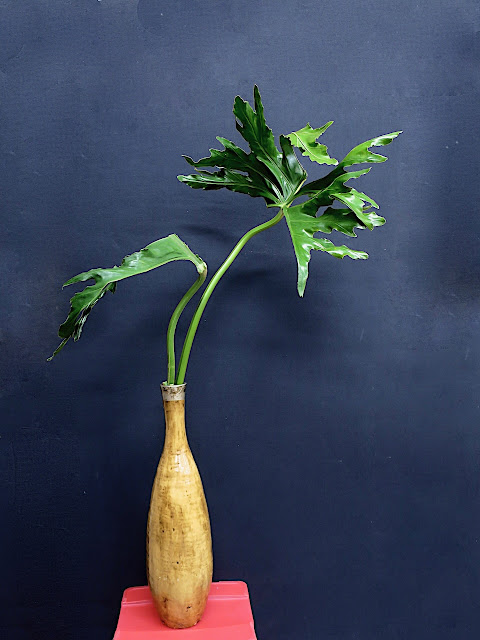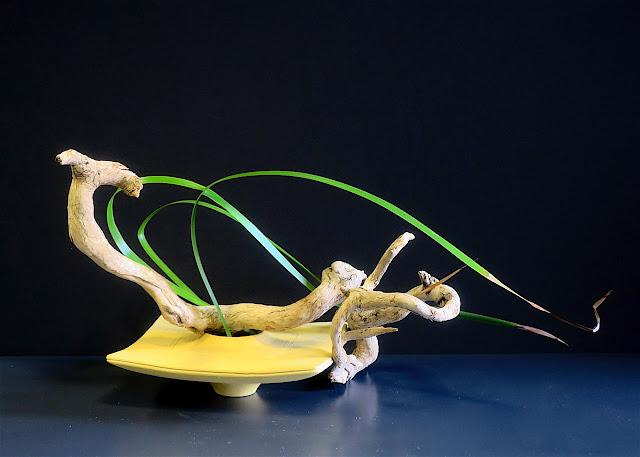Editor's note: The orange flower in Maureen's arrangement two weeks ago (30th June) was incorrectly identified. It is a Tagetes not Calendula. Thanks to Fermi, my friend and plant-knowledge guru, for the correction.
In my Geelong class...
Maree's exercise was to make a 'Celebratory Ikebana'. She used Delphinium, Eucalyptus leaves, Tagetes and some wild Rapeseed Brasssica napus.
Christine was inspired by the curving lines of this unidentified Hakea from her garden. The contrasting material is an unidentified Banksia.
Ellie used the strikingly coloured 'Peach sticks', which I gather is a cultivar grown for the floristry industry. The flowering material may be Pieris japonica.
Three weeks ago, the guest presenter at the Victorian Branch of the Sogetsu School workshop was Ray Bywaters. She is the Director of the South Australian Branch of Sogetsu and last year was the recipient of the Norman and Mary Sparnon Ikebana Endowment Scholarship. This is the scholarship that funds active Australian Sogetsu teachers to attend the Sogetsu Head Quarters in Tokyo for three months of classes.
Ray chose interesting non-curriculum themes for her two workshops. In the first workshop members were asked to make an ikebana in response to the compound Japanese character, “花鳥風月“ Kachoufugetsu. The expression evokes the appreciation of natural beauty. Its literal translation being; flower, bird, wind, moon. We were encouraged to make a freestyle ikebana drawing on any of the ideas these words evoked in us.
The idea of wind appealed to me and I used a twisting branch of Moonah Melaleuca lanceolata. This small tree grows on the clifftops around Torquay and, because of the strong prevailing winds, it develops twisting forms.








No comments:
Post a Comment